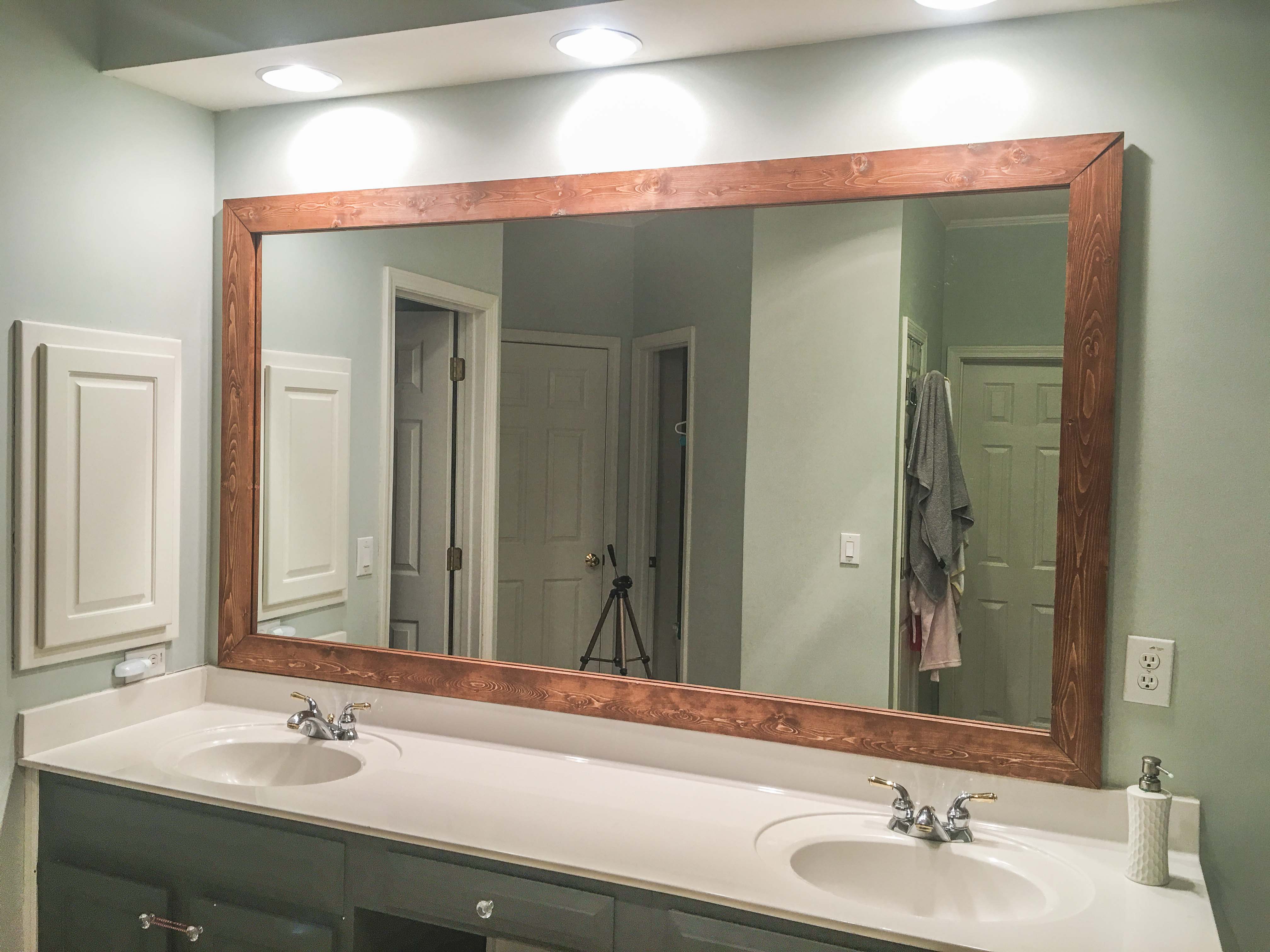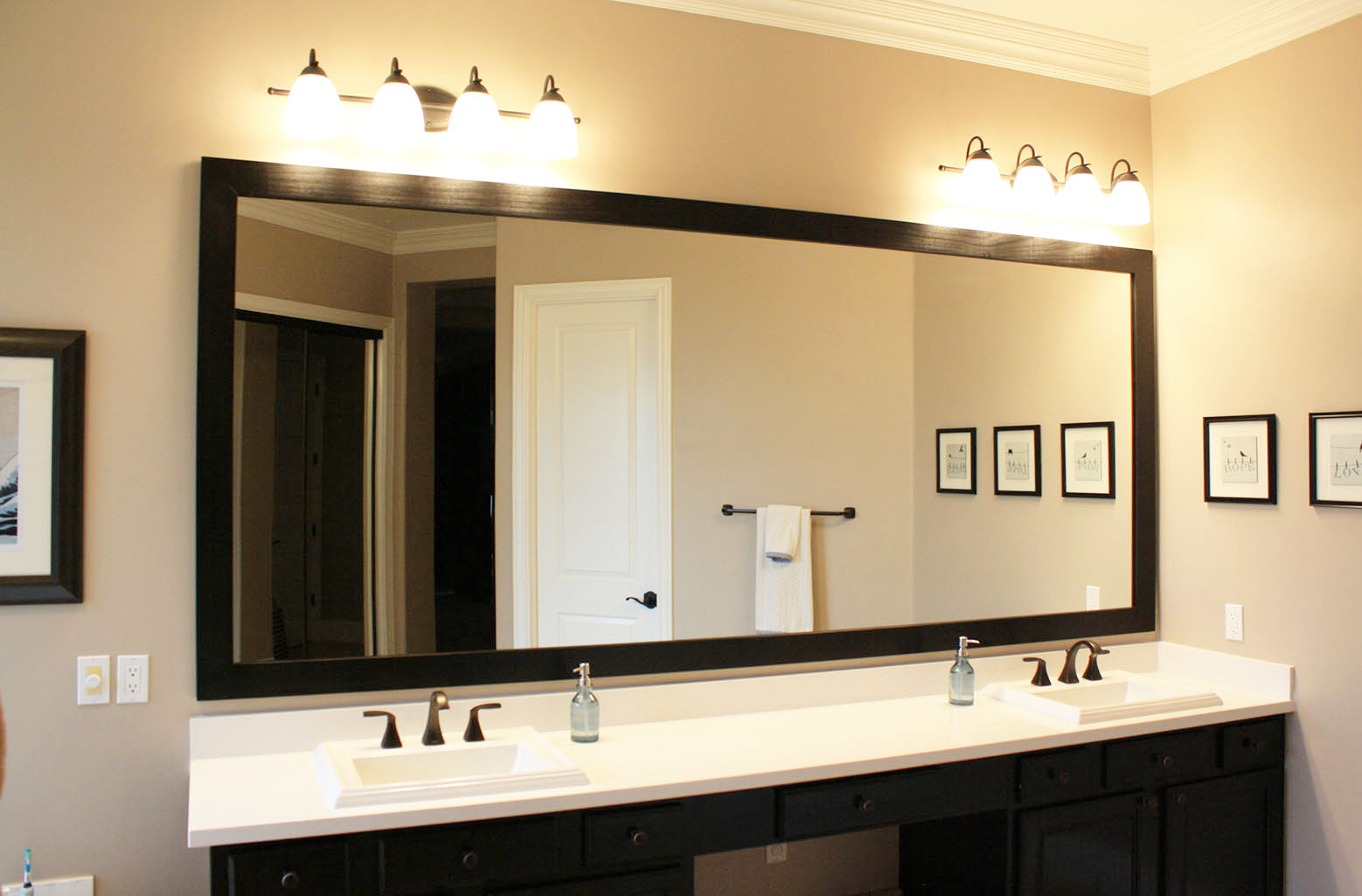Color Psychology and Bathroom Mood: What Color Should My Bathroom Mirror Be
The color of your bathroom mirror can significantly influence the overall mood and atmosphere of the space. Color psychology plays a crucial role in how we perceive and react to our surroundings, and understanding this can help you create a bathroom that reflects your desired ambiance.
Color Psychology in Bathroom Design
The choice of colors for your bathroom can impact your mood and how you feel when you use the space. Some colors are known to promote relaxation, while others can invigorate or create a sense of luxury.
- Relaxing Ambiance: Soft, cool colors like blues, greens, and pale lavenders are associated with calmness and serenity. These colors can help create a tranquil and soothing atmosphere, ideal for a bathroom where you want to unwind and de-stress.
- Invigorating Atmosphere: Vibrant, warm colors such as oranges, yellows, and reds can evoke feelings of energy and excitement. These colors can be used to create a stimulating bathroom space, perfect for starting your day or giving you a boost of energy.
- Luxurious Ambiance: Rich, deep colors like gold, silver, and dark blues are often associated with elegance and sophistication. These colors can create a luxurious and opulent bathroom environment, ideal for creating a spa-like experience.
Mirror Color as a Design Element, What color should my bathroom mirror be
The color of your bathroom mirror can complement or contrast the overall design of the space.
- Complementary Colors: Choosing a mirror color that complements the existing colors in your bathroom can create a cohesive and harmonious look. For example, a silver mirror can complement a bathroom with a neutral color palette, while a gold mirror can enhance a bathroom with warm tones.
- Contrasting Colors: A contrasting mirror color can add a pop of interest and visual excitement to your bathroom. For example, a black mirror can create a dramatic contrast against a white bathroom, while a bright red mirror can add a bold statement to a neutral space.
Matching Mirror Color to Bathroom Decor

Choosing the right mirror color for your bathroom can significantly impact the overall aesthetic and feel of the space. It’s not just about functionality; it’s about creating a harmonious blend of colors and styles that enhance the existing decor. By carefully considering the existing fixtures, tiles, and paint, you can select a mirror color that complements the overall design, adding a touch of elegance, warmth, or modern sophistication.
Mirror Color and Bathroom Style
The color of your bathroom mirror can play a crucial role in defining the overall style of the space. It can complement existing fixtures, tiles, and paint, creating a cohesive and aesthetically pleasing look. Consider these recommendations for different bathroom styles:
| Bathroom Style | Recommended Mirror Colors | Example Colors | Visual Impact |
|---|---|---|---|
| Modern | Neutral, Black, Silver, Brushed Nickel | White, Black, Silver, Brushed Nickel | Clean, sleek, minimalist |
| Traditional | Gold, Brass, Antique Silver | Gold, Brass, Antique Silver | Elegant, classic, timeless |
| Industrial | Copper, Black, Brushed Nickel | Copper, Black, Brushed Nickel | Rustic, edgy, modern |
| Coastal | White, Silver, Blue, Green | White, Silver, Light Blue, Seafoam Green | Relaxing, airy, natural |
Metallic Finishes: Adding a Touch of Elegance
Metallic finishes like gold, silver, and copper can add a touch of elegance or industrial chic to a bathroom. They can create a statement piece and enhance the overall design.
“Gold mirrors can create a luxurious and glamorous feel, while silver mirrors can add a touch of sophistication and modernity. Copper mirrors can add a rustic and industrial feel.”
For example, a gold-framed mirror can elevate a traditional bathroom, while a copper mirror can add a modern touch to an industrial-style bathroom.
Mirror Color Trends and Innovations

The bathroom mirror is no longer just a functional element; it has become a statement piece that reflects personal style and enhances the overall aesthetic of the space. In recent years, the bathroom mirror landscape has been transformed by a surge in innovative colors, finishes, and design trends, offering homeowners a wider range of options to personalize their bathrooms.
Colored Glass Mirrors
Colored glass mirrors offer a unique way to add a touch of vibrancy and personality to a bathroom. These mirrors are crafted using glass that has been infused with pigments during the manufacturing process, resulting in a subtle yet distinct color that subtly tints the reflection.
- Benefits: Colored glass mirrors can create a warm and inviting ambiance, complement the existing color palette of the bathroom, and add a touch of sophistication. For example, a soft blue-tinted mirror can evoke a calming and serene atmosphere, while a warm amber tint can create a cozy and inviting feel.
- Drawbacks: Colored glass mirrors can slightly distort the reflection, and the color intensity can vary depending on the lighting conditions. Additionally, they may be more expensive than traditional mirrors.
Tinted Mirrors
Tinted mirrors, also known as reflective glass, are created by applying a thin layer of metallic coating to the back of the glass. This coating reflects light and creates a subtle tint that can range from light to dark, depending on the desired effect.
- Benefits: Tinted mirrors offer a more subtle color effect compared to colored glass mirrors. They can be used to create a sense of depth and dimension in the bathroom, while also providing a degree of privacy. Additionally, tinted mirrors are available in a wide range of colors and finishes, offering greater flexibility in design.
- Drawbacks: Tinted mirrors can sometimes create a slightly hazy or distorted reflection, especially in darker shades. They may also be more prone to scratches and damage than traditional mirrors.
Mirrored Surfaces with Decorative Patterns
Mirrored surfaces with decorative patterns have gained immense popularity in recent years, offering a unique and stylish way to elevate the bathroom decor. These mirrors feature intricate designs etched, engraved, or printed onto the mirrored surface, adding a touch of elegance and sophistication.
- Benefits: Decorative patterned mirrors can add a focal point to the bathroom, enhance the overall aesthetic, and create a sense of visual interest. They are available in a wide range of patterns, from geometric and floral to abstract and contemporary, allowing homeowners to choose a design that complements their personal style.
- Drawbacks: Mirrored surfaces with decorative patterns can be more expensive than traditional mirrors, and the intricate designs may require more delicate cleaning and maintenance. Additionally, they may not be suitable for all bathroom styles, and it’s important to choose a pattern that complements the existing decor.
Popular Mirror Color Options
- Black Mirrors: Black mirrors exude a sophisticated and modern aesthetic. They can add a touch of drama and elegance to a bathroom, especially when paired with minimalist or industrial design elements. They are often used in contemporary bathrooms, adding a sleek and sophisticated touch.
- Gold Mirrors: Gold mirrors bring a touch of luxury and glamour to the bathroom. They can complement a variety of styles, from traditional to modern, adding a touch of warmth and sophistication. Gold mirrors are often used in bathrooms with ornate fixtures and decorative elements.
- Silver Mirrors: Silver mirrors are a classic and timeless choice for bathrooms. They reflect light beautifully, creating a bright and airy ambiance. They can complement a variety of styles, from traditional to contemporary, and are often used in bathrooms with sleek and minimalist fixtures.
- Copper Mirrors: Copper mirrors offer a warm and inviting aesthetic. They can add a touch of rustic charm to a bathroom, complementing farmhouse or industrial design styles. Copper mirrors are often used in bathrooms with wooden accents and natural materials.
- Rose Gold Mirrors: Rose gold mirrors are a popular choice for adding a touch of femininity and elegance to the bathroom. They can complement a variety of styles, from modern to traditional, and are often used in bathrooms with soft and muted color palettes.
What color should my bathroom mirror be – A bathroom mirror’s color can dramatically alter the ambiance of your space. For a sleek, modern look, consider a mirrored finish that complements the style of your fixtures, like a single hole bathroom faucet kohler. If you’re aiming for a more traditional feel, a framed mirror in a rich wood tone might be the perfect touch.
A bathroom mirror’s color can dramatically impact the room’s ambiance. A sleek, modern bathroom with a minimalist aesthetic might benefit from a mirrored finish that reflects the cool, industrial tones of a delta satin nickel bathroom faucet. However, if your bathroom leans towards a more traditional or farmhouse style, consider a warmer toned mirror to create a cozy and inviting feel.
